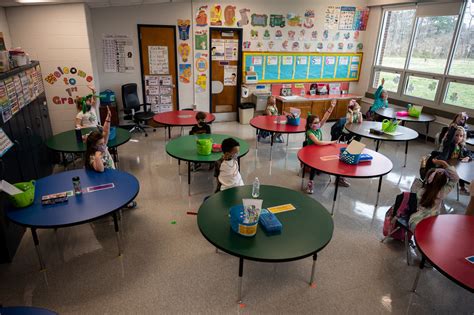One week before the first day of school in Colorado’s Adams District 14, new superintendent Karla Loria went knocking door-to-door to find students who had not yet registered for school this year.
There were 12 names on her list. During her first attempt, she registered eight. By the end of the week, she had found and enrolled all 12. Other administrators tasked with their own list of missing children weren’t as lucky — and their jobs could be on the line because of it.
With enrollment numbers tied directly to the district’s funds, it’s imperative that students show up to school.
To boost her district’s numbers, Loria launched a $43,500 marketing campaign that included five billboards urging students to come back to Adams 14.
“It’s asking, or inviting, our families outside of our district or inside of our district to enroll so we can start capturing students and attracting students from other districts as well,” she told the school board, who unanimously approved the project.
Despite their efforts, the district started school with 5% fewer students, adding to a decline made worse by the coronavirus pandemic.
At Dallas Independent School District in Texas, about 12,000 students failed to show up for the first day of school. Administrators there, like in Colorado, have been working overtime to track them down.
H.I. Holland Elementary Principal Shanieka Christmas-McDonald said educators were calling families to say, “Hey, where’s my baby?”
“We’re really connecting with them in our conversations, letting them know we miss the student, we want to see them here and that we’re going to take care of them as much as we can,” she told the Dallas Morning News.
But working against them were three sloppy back-to-school rollouts and families who feared sending their children to school amid a surge of COVID-19 cases driven by the fast-moving delta variant.
This year, district officials project they’ll have about 146,000 students, down from previous years.
On Aug. 2, only 270 children showed up at Holland Elementary. About 360 were expected.
In the weeks since, the school has slowly been able to build its attendance and said an official enrollment count was still weeks away.
Even with a billion-dollar federal government lifeline, public schools across the country are headed toward a financial cliff.
School officials have said that federal COVID-19-relief funds aren’t enough to make up for the blows to state and local budgets, or the cost of remote learning, as well as the attempts to get children back into classrooms. State and local funding make up about 90% of school district revenue. In many states, local funding contributions flow through the state treasury before making their way to school districts. States use enrollment numbers to calculate money on a per-student basis. If a student leaves a school district, the money goes with them.
Preliminary enrollment numbers for Oregon’s largest school district show a 3.1% decline. The numbers follow a 2020-21 school year enrollment drop, not only in Portland but the state as a whole.
In North Carolina, enrollment dropped 5% last year. For kindergarteners, the decrease was 15%.
Lindsay Wagner of the state public school forum said there was some concern that students may not come back following the COVID-19 crisis.
“A lot of districts, especially rural ones, don’t have the local funding to absorb [the] losses,” she said. “They really rely on state funding to fund their school budgets.”
In Buncombe County, every student that leaves takes $4,592.46 with them.
Cutting into enrollment is the rise of home-schooling.
Home-schooling has shown its staying power after starting as a temporary approach to education during the lockdown.
Typically, a little more than 3% of the nation’s school-age children are home-schooled in a given year, according to federal data. However, a significant surge has been confirmed by the U.S. Census Bureau, which reported that in March, the rate of home-schooling rose to 11% by September 2020.
In Wisconsin, public schools saw their largest single-year decrease in enrollment last fall. Private school enrollment also dropped 1.5%, about half as much as public schools, according to a Wisconsin Policy Forum report released in August. The decrease brought private school enrollment down to 118,862 — its lowest point in at least a decade. Home-schooling, on the other hand, shot up by 47% over the preceding year, its largest increase since 1984.
Read More From The PatriotAmerican
In Texas, the number of parents choosing to home-school nearly tripled, going from 4.5% in 2019 to 12.3% in 2020, according to the U.S. Census Bureau.
In New Mexico , 6.4% of households chose to home-school at the beginning of the 2020-21 school year. That number jumped to 14.3% by the middle of the fall semester.


Parents are fed up with the school boards across America dictating what they think is best for our kids. Mandates, CRT, letting unions dictate what teachers need to do. Most of the time it’s not in the kids best interests. Parents are starting to fight back.